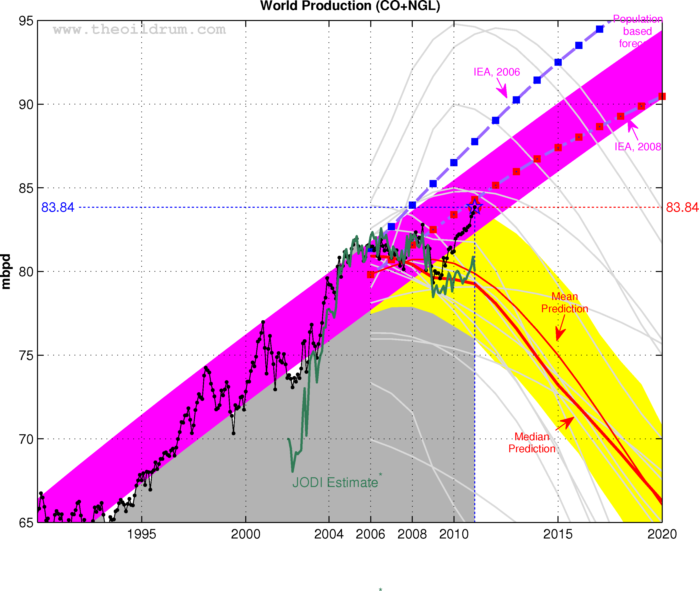reported by the Energy Information Agency of Washington (EIA)
had begun to diverge from same data reported by the Joint Oil Data Initiative (JODI)
to the point that EIA data was now about 3.8 million barrels per day (mmbpd) higher than JODI.
EIA data show strongly growing global oil production reaching new peaks
in excess of those reached in 2005 and 2008,
whilst JODI data do not and are more consistent
with a continuation of the bumpy plateau reached in 2006.
Why is this important?
There are a number of issues at stake.
First, the EIA data give the impression that high price
has fed into an increase in global production capacity whilst the JODI data do not.
The EIA data give the impression of strong growth in the global economy
feeding into higher demand for and production of oil
whilst the JODI data do not.
Finally the cause of the divergence
raises questions about reporting standards and why these should vary.
From 2004 to 2009, the EIA and JODI data show very good agreement for Saudi Arabia,
showing that for a prolonged period in the recent past
the Saudis reported more or less same numbers to EIA and JODI
and that these agencies managed to report these numbers accurately.
But since Jan 2010, the two data sets began to diverge
to a maximum over 1 million bpd in June - Sep 2010.
A similar kind of discrepancy appears in the pre 2004 data.
The divergence may not appear to be much,
but added to similar from other OPEC countries shown in Figure 1
the cumulative effect is highly significant for global oil production statistics.
Which of the data sets are correct?
Did Saudi production rise during 2010 as shown by the EIA
or did it stay flat as shown by JODI?
Did the Saudis (Iranians, Algerians and Angolans)
for some reason start reporting different numbers to the EIA and JODI?"
http://www.theoildrum.com/node/7965
 |
| http://www.theoildrum.com/node/7949 |
No comments:
Post a Comment